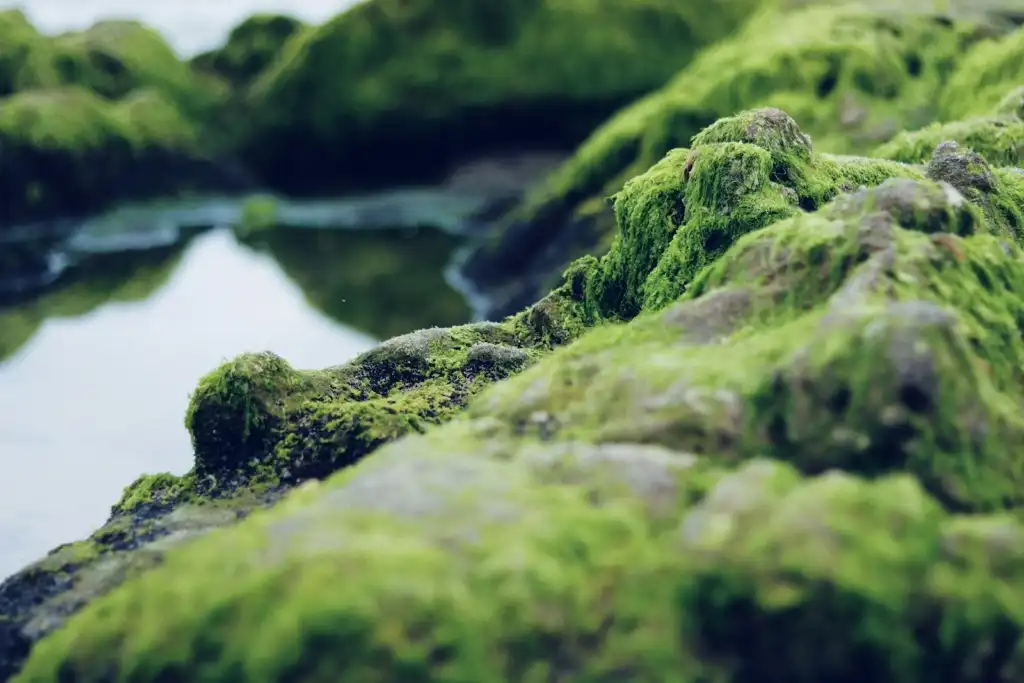The field of phycology, encompassing the study of algae, has progressed through distinct phases since its inception centuries ago. Early morphological descriptions led to investigations of sexuality, physiology, and biochemistry as microscopy and culture techniques advanced.
Increasingly sophisticated analytical methods continue to revolutionize the understanding of algal evolution, diversity, and ecology.

The history of phycology provides an illuminating window into the changing relationship between technology, theory, and the growth of scientific knowledge.
Beginnings: Early Documentation of Algae
Humans have utilized algae since antiquity, yet scientific inquiry into these organisms emerged only within the last few centuries. Coastal peoples have harvested seaweeds like porphyra for food starting over 2000 years ago.
Ancient Chinese herbals documented various algal taxa. For centuries, algae lacked formal taxonomic treatment and were perceived more as an ecological phenomenon than a distinct group.
The formal scientific study of algae traces back to the 16th and 18th centuries, as microscopy enabled detailed observations. Early phycologists focused on macroalgae, classifying seaweeds based on color and morphology.
Microscopic examination by Leeuwenhoek revealed unicellular algae in the 17th century. Linnaeus established the first binomial nomenclature for algae like Fucus in Species Plantarum (1753).
By the 18th century, some algal life cycles were under investigation, but sexuality remained controversial. Eminent naturalists presumed algae lacked sexual reproduction, propagating only by “mechanical fragmentation.”
The persisting view of algae as “primitive” drove curiosity about how they originated spontaneously. Algal diversity thus remained vastly underestimated during this phase.
The Rise of Phycology in the 19th Century
The burgeoning interest in natural history galvanized algal research in the 1800s. Improved microscopy enabled scientists like William Harvey to expand catalogs of marine algae.
Kutzing produced an authoritative text on classification reflecting extensive worldwide collections. Rabenhorst compiled the first major flora devoted to algae.
Stackhouse’s seminal demonstration of sexuality and fertilization in Fucus during this period overturned assumptions about algal propagation.
Subsequent observations of meiosis, gamete fusion, and spore germination in diverse lineages revealed that algae reproduce sexually and asexually.
By mid-century, phycologists could delineate groups like Chlorophyta, Rhodophyta, and Phaeophyta based on pigmentation. Form genera gave way to identification using reproductive characters.
Algal life histories, from isogamy to oogamy, were now under scrutiny. Cultural techniques facilitated the study of morphological development.
Pre-20th Century Advancements
In the late 1800s, phycology benefited from cell biology and physiology applications. Improved microtechnique enabled intricate studies of morphology and cytology.
Schmitz and Falkenberg illuminated the complexities of the red algal life cycle. Phylogeny supplanted purely descriptive approaches to classification.
Pioneering phycologists like Borzi and Klebs meticulously documented algal life histories, cell structures, and colony formation. Their classic studies of conjugate division and flagellar structure remain relevant today.
Taxonomic monographs elucidated the global diversity of groups like desmids and diatoms. By the advent of the 20th century, algal biology had grown vigorous and rigorous.
Progress in the 20th Century
The early 20th century saw comprehensive floras and taxonomic treatments emerge for algal groups worldwide. Pure culture methods spread following work by Chick.
Biochemical analysis joined morphology as an identification tool, with Tilden and others’ chemical screening of pigments, carbohydrates, and proteins.
Physiological research characterized photosynthetic pathways, nutrient uptake, and salt balance in key algae. Plasticity of form during algal life histories was charted in response to salinity, temperature, and nutrients. Smith’s psychological review ensured international communication.
The mid-20th century brought electron microscopy, revealing minute details of cell structure. Thallus organization, flagellar apparatus, and mitosis could now be visualized at high resolutions.
Biochemical techniques enabled the isolation of algal metabolites, hormones, vitamins, toxins, and lipids. Algal physiology gained quantitative rigor.
Phycology in the Late 20th Century
The postwar era saw phycology become more interdisciplinary, embracing genetics, ecology, and biochemistry. Culture collections like the CCMP professionalized algal research. Chemotaxonomy and molecular systematics joined morphology to infer evolutionary relationships.
Studies of algal symbioses illuminated their role in marine biology. Photosynthesis mechanisms were dissected through chloroplast isolation and radioactive tracers. Stress ecophysiology was increasingly investigated as pollution spread. Spread of human activity heightened awareness of algal economic importance.
21st Century Phycology
Recent decades have seen phycology transformed by DNA sequencing and genomic approaches. Molecular phylogenetics provided new insights into endosymbiotic algal origins.
Culture-independent environmental surveys now describe algal communities with unprecedented depth.
Diverse analytical techniques continue to expand understanding of algal adaptations, chemical ecology, and contributions to global cycles.
High-performance computing has accelerated algal growth models and systems biology. Algal aquaculture and biofuels draw increasing interest for sustainable biotechnology.
As in centuries past, new theories and tools continue to reveal the fascinating biology of algae. Ongoing exploration of algal diversity and function ensures that future generations of phycologists will continue pushing the boundaries of this vibrant, complex scientific discipline.
Key Figures in the History of Phycology
The advancement of phycology over the centuries has relied upon the dedicated work of researchers across the globe. Some especially influential algal biologists include:
- Carl Linnaeus: Established binomial nomenclature for algae in Species Plantarum (1753), classifying four taxa.
- William Harvey: Produced seminal volumes on marine algae of Britain and North America in the 1800s, documenting numerous new genera based on morphology.
- Areschoug: Elucidated sexual reproduction and alternation of generations in brown algae during the mid-19th century.
- Johannes Müller: Conducted extensive expeditions documenting algal biogeography across Europe and the Americas in the 1800s.
- Friedrich Hustedt: Described over 1000 new diatom species and pioneered diatom biogeography in the early 20th century.
- Katherine Milton: Conducted pioneering research on algal-invertebrate symbioses, expanding knowledge of chemosymbiosis.
- Irene Manton: Her skillful application of electron microscopy provided major insights into algal flagellar structure and mitosis.
- F.E. Fritsch: His 1935 treatise The Structure and Reproduction of Algae set new standards for investigating the morphology and systematics of algae.
- Ruth Patrick: A pioneer in diatom ecology, she advanced paleolimnological techniques to track lake histories and pollution.
- T.V. Desikachary: Prolific scholar of Cyanophyta from India who contributed to understanding algal taxonomy, ecology and economic roles.
Major Developments in Phycological Techniques
- Light Microscopy (17th Century) – Enabled Leeuwenhoek and others to first identify microscopic algae.
- Cell Staining (19th Century) – Use of chemical dyes like hematoxylin revealed algal structures.
- Pure Culturing (1892) – Beijerinck’s sterile technique revolutionized algal physiology and life history studies.
- Chromatography (20th Century) – Allowed identification of algal pigments and metabolites.
- Radioisotopic Tracers (1940s-50s) – Tracking radio-labeled atoms illuminated photosynthetic pathways.
- Electron Microscopy (1950s) – Provided nanometer imaging of organelles, structure and growth.
- Epifluorescence Microscopy (1960s) – Fluorescent labeling probes illuminated coral symbionts.
- Scanning Electron Microscopy (1965) – Enabled intricate topographical study of diatom frustule structure.
- Next-Generation DNA Sequencing (2005) – Facilitated algal barcoding, metagenomics, and phylogenetic studies.
- CRISPR Gene Editing (2013) – Permits targeted genetic manipulation in model algae like Chlamydomonas.
The Future of Algal Biology
Phycology today spans diverse disciplines from cell biology to ecosystems science. Culturing, microscopy, spectroscopy, chromatography, sequencing, bioinformatics, and other tools empower investigations of algal biodiversity, ecophysiology, biochemistry, and ecology.
Practical applications also drive progress in algal aquaculture, genetic engineering, and biotechnology.
Ongoing exploration of algal diveristy will likely uncover novel classes and lineages to expand the tree of life. Connecting genotypes to functional traits remains fundamental. There is still much to learn about algal symbiotic relationships and chemical communications.
Responses to climate change and anthropogenic impacts require study over different spatial and temporal scales.
From its descriptive origins centuries ago, phycology has blossomed into a dynamic transdisciplinary science interfacing with specialized fields from nanotechnology to astrobiology.
The next generations of phycologists can look forward to integrating new molecular, analytical, and imaging approaches to continue advancing
References
- An Introduction to the Study of Algae By V. J. Chapman
- ALGAE by O P Sharma
- https://en.wikipedia.org/wiki/Algae
